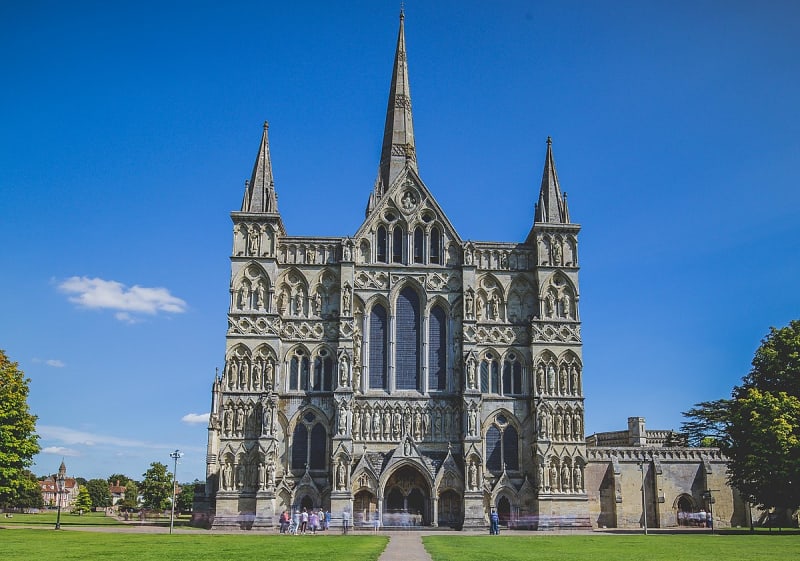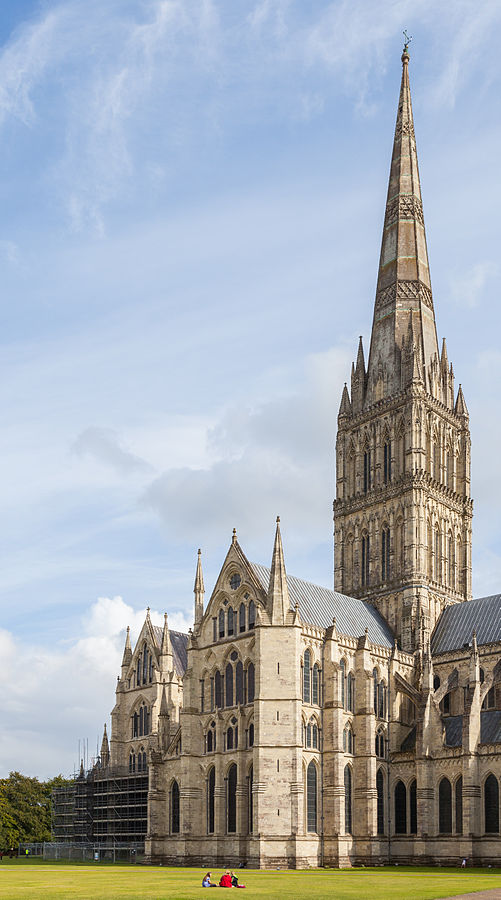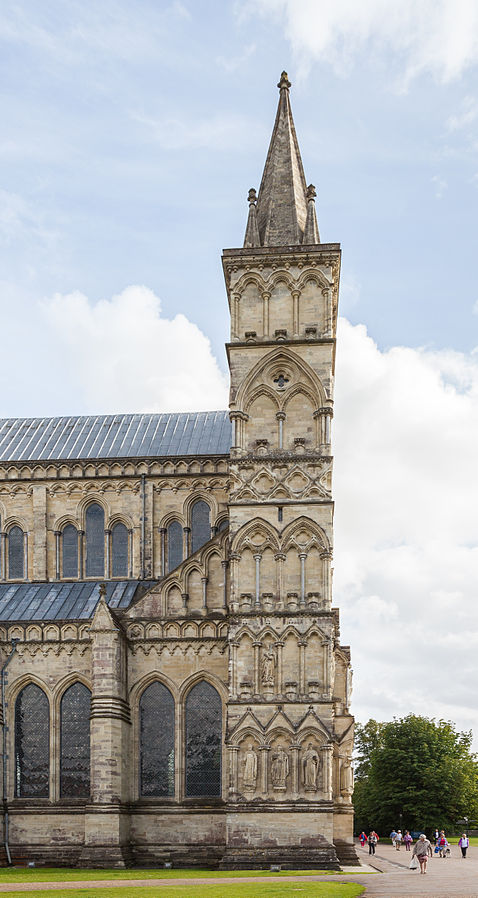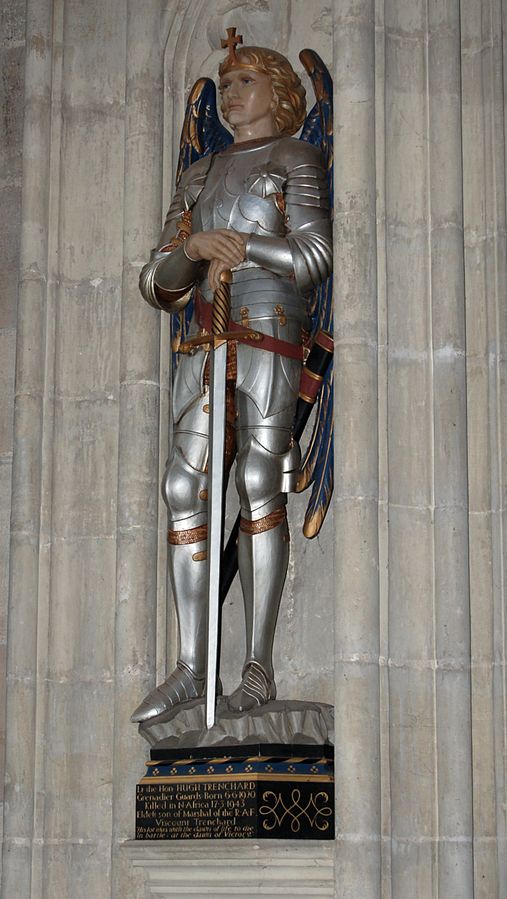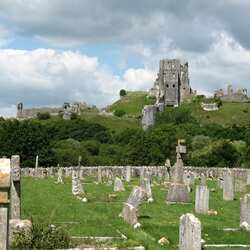Salisbury Cathedral
Salisbury Cathedral is located in the town of the same name in the county of Wiltshire, in society it is called the perfect embodiment of the early English style. Officially known as the Cathedral of the Blessed Virgin Mary, it has many unique features in its architecture. Today, the building's territory is a quiet harbor with open green lawns and quiet streets stretching around the cathedral, with a harmonious combination of medieval and elegant dwellings.
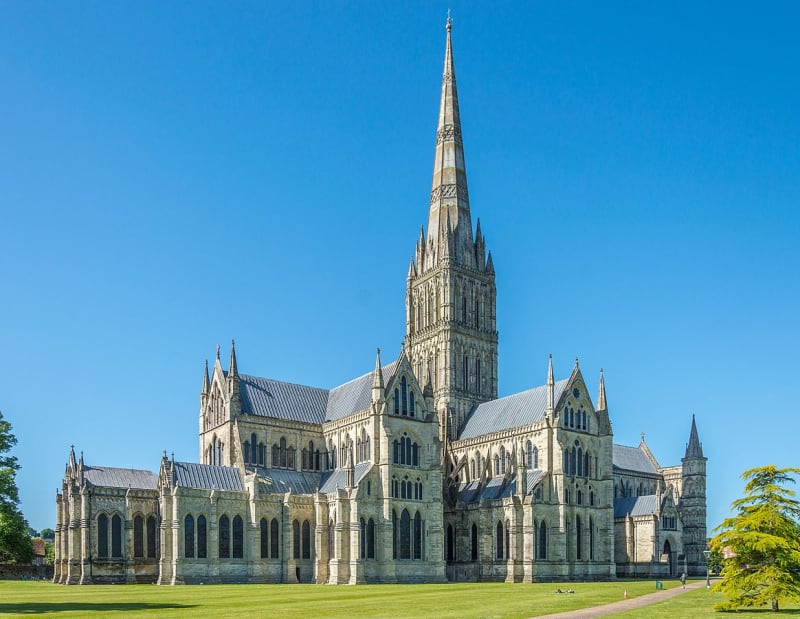
The History of Salisbury Cathedral
The foundation stone was laid by Bishop Poore in 1220. The monastery began to be built in 1240, and the beautiful Chapter House was built in 1263. In 1265, a free-standing bell tower was added. This bell tower has long disappeared, having become a victim of the reconstruction carried out at the end of the 18th century by architect James Vyatt. Bishop Puru needed clergymen to do the work at the cathedral, and he invited priests, clerks, canons, and older clergy. He gave them plots of land near Salisbury Cathedral and along the riverbank. One and a half acres were allocated to the lower clergy for the construction of dwellings, and twice as much to the senior clergy.
Architecture features
Salisbury Cathedral was built between 1220 and 1258 in what is now called Early English Gothic style. This style emphasized height and lightness and was quite revolutionary compared to the bulkier and heavier buildings of the 11th and 12th centuries. Most of the great churches have slowly developed over the centuries, resulting in a complete structure encompassing many architectural styles. It is unique that Salisbury was built almost to the end in one generation. As a result, the completed building of Salisbury Cathedral represents a unity of style that satisfies and evokes memories of the era of English architecture.
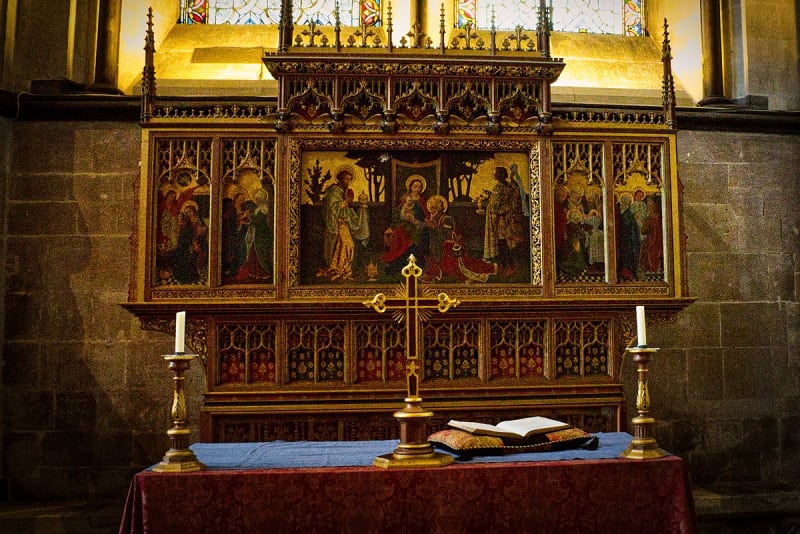
Burials under Salisbury Cathedral
Salisbury is famous for its many intriguing medieval tombs. It is the grave of William Longespie, the first person to be buried in the cathedral. Truly, the magnificent tomb of Mompesson, which contains beautifully colored images of Sir Richard Mompesson and his wife Catherine, pales in its splendor next to the tomb of Sir Edward Seymour. It is strongly elongated upwards and consists of gilded marble. Sir Edward married Catherine, the sister of Lady Jane Grey, and their images are next to each other under a wonderfully carved canopy.
